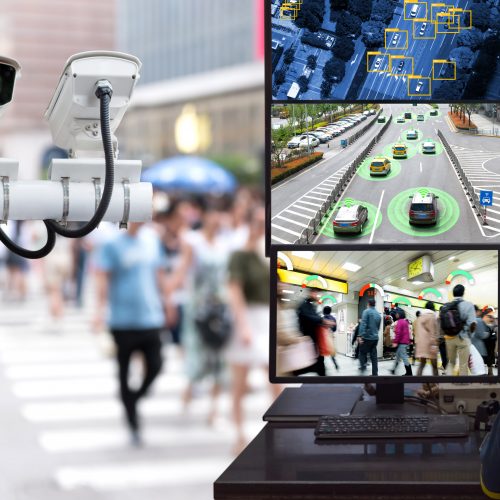Description
Data has a tremendous role to play in the decision-making process of urban initiatives. By leveraging data effectively, city governments can enhance their understanding of urban challenges, start meaningful discussions with citizens, and identify targeted and impact-focused goals at both the strategic and operational levels.
Broadly speaking, there are three crucial areas where data can enhance city governance:
- Identification: of challenges, and the subsequent allocation of resources for urban infrastructure and service delivery.
- Forecasting: future growth of the city and the capacity of government to fulfil these needs.
- Evaluation: of past policy decisions, with a view to increasing government accountability and reliability.
For data to be effective as a policy tool, however, cities need to build up their institutional capacities just as much as their technology. Simply gathering more data for the sake of it will rarely solve the issues that cities face. Instead, efforts must be focused on understanding the priority challenges that cities face and generating actionable solutions needed to overcome them.
First, cities might ensure they have a viable Digital Strategy or policy Steering Committee in place, before selectively procuring data and “smart” solutions in line with these. Such foundations can help city policymakers to formulate a clear and achievable vision for reform, one which identifies existing gaps and minimises the opportunity costs of expensive investments in digital infrastructure.
Another foundational step would be to ensure that cities have sufficient human resources – such as data scientists and engineers – to properly analyse any new information they acquire. Such IT talent could either be employed in-house or through participation models and assistance from the private sector. For example, the Rio de Janeiro Operations Centre has its own technical branch for analysing data,[i] but also partners with private companies to process specific information such as weather forecasting models.[ii]
Once cities have the resources to properly analyse data, they must ensure that any conclusions are adequately worked into the discussion and formation of policy decisions.
In cities such as Da Nang, Vietnam, for example, the government frequently collaborates with non-governmental organisations (NGOs) to analyse flood risks arising from climate change and rising sea levels.[iii] Now that the city has been able to properly identify flood-prone areas, it has gone on to revamp its entire urban development plan, enhancing the city’s drainage systems and altering land use patterns to minimise risk in the most vulnerable locations.[iv]
With such principles in mind, cities acknowledge it is not just costly technologies that matter, but how information generated is ultimately processed and analysed to form meaningful conclusions.
It is important to recognise here that different policy demands are likely to place different requirements on the types of data that governments need – whether it is traditional, primary forms of data such as census surveys; or new, passive, secondary types of data such as those derived from sensor systems or digital exhaust. Policymakers should carefully consider the common trade-offs between these different types of data – such as those of cost, resource intensity, accuracy, speed of access, and focus – when deciding what types of data to procure themselves, how best to do so, and how this aligns with resource capacities and institutional priorities.
One option may be to engage outside stakeholders such as the private sector to share data they collect as a by-product of their services (for example, Google Maps or Uber data). Similarly, cities may often work with academia and civil society to conduct research where the government does not have in-house capacity, therefore helping to maximise the value of available data. Chicago has collaborated with several universities to create a predictive traffic management tool called the SmartData Platform.[v] The platform collects data on traffic patterns and pedestrian activities across the city, and then compares the dataset with other municipal data to let civil departments know when and where to intervene to avoid traffic collisions. [vi]
These models of participation are particularly important given that rapid advances in technology are consistently offering new ways of studying and managing the urban environment.
Data that are now collected through sensor-based (aka “smart”) devices can be a vital source of information that cities can tap into in order to improve policymaking and implementation – and in many cases these datasets can be collected more often, more cheaply and in greater detail than ever before. For example, in Seosan, South Korea, sensor-based water meters have been used to identify pipe leakages that were heavily weighing on the city’s water availability.[vii] By integrating both sensor and survey data the city was able to fine-tune its pipe pressure, leading to a major reduction in burst pipes and improving the city’s overall water-to-revenue ratio. [viii]
Similar advances in how we transmit, store and process data will also offer new potential for improving urban decision-making. For example, cloud storage now permits governments to store data away from the risks of damage, tampering or loss that so often troubled traditional paper-based or computer-stored information. Cities such as Busan in South Korea have built major cloud-based platforms and put them to a variety of uses; in one initiative, local businesses and developers have been encouraged to use civic data to create digital applications that benefit public life and stimulate local job growth.[ix]
Depending on how data are used, they have the potential to fundamentally reshape city strategies, troubleshoot on tactical decisions, and improve long-term municipal operations. All in all, data are a key ingredient of informed policy. But data-based decision-making can only truly be achieved once cities know how to process and analyse data properly and integrate it into policies.

Resource implications and key requirements
As mentioned, although digital infrastructure often forms the backbone of a smart city’s decision-making process, knowing which urban challenges to tackle is the prerequisite to building credible datasets that contain the right information. Municipal leaders should therefore first devote adequate resources to understanding their city’s challenges. Common examples of this might include conducting public town halls and workshops, analysing historical data, or even completing internal inventories across government departments to identify missing or outdated datasets.
Once the key challenges have been identified cities can pursue targeted data collection programmes. This process is typically undertaken through a mix of procuring primary survey data, secondary data from third parties, and/or new forms of passive, smart data. Each option presents trade-offs in terms of its applicability and cost to the end-user, so these are important considerations for resource-constrained governments.
We should also recognise that good datasets require frequent updates. This presents an important advantage for smart systems which passively collect a constant stream of data. Many cities are now widely deploying cameras and smart sensor systems which ensure that millions of data entries can be collated and transmitted in real time, often without compromising quality. To properly exploit such data, a city’s wider infrastructure should also be able to transmit and store the information with uninterrupted flow. For instance, before building its cloud, the Busan metropolitan government equipped the city with a high-speed broadband highway. [x]
While robust infrastructure enables practically all data-related initiatives, effective data management is also critical to ensure it is processed and used effectively. Adequately staffing public departments and upskilling people in-house is a vital element of resource spending. This can be done in broad terms or focused on particular and well-defined issues. Seosan and Da Nang would fall into this latter category, as in their efforts to address pre-specified challenges such as water leakages and flooding patterns they set up specialist taskforces to act on the subject within government.
Naturally, the more data cities collect, the more resources they might need to make use of it. As technology develops, it presents opportunities to automate and enhance our approaches, but this doesn’t take away from the collective institutional and technological effort required among city government and urban stakeholders to properly unleash the power of data.

Potential private-sector participation
Private-sector stakeholders can act as a catalyst for a city’s data-based decision-making process by contributing a variety of financial, human and digital resources.
An obvious example relates to the fact that building and maintaining digital infrastructure is a hugely capital-intensive process. City governments are increasingly looking towards private companies to secure funds for investments such as those in broadband communications, 5G, cloud-based storage and data centres, among others. A common method for this would be through a public-private partnership (PPP), which benefits the private sector based on the similarities of these assets to traditional infrastructure financing, as well as governments through their increased access to finance and technical know-how. In Busan, the metropolitan government forged a PPP with two tech companies to successfully build and operate its cloud.[xi] Thanks to the partnership, the government received financial support and private-sector expertise to deliver the new infrastructure, while the companies were able to tap into the technological agility of the Asian IT market for a win-win situation.
A second example is that governments can often procure and make use of data collected by private-sector companies as part of their normal operations. Such data can often have huge value for public policy if appropriately shared, such as Uber and Google Maps data, which have played an important role in updating and enhancing cadastral systems across many developing cities.[xii]
Lastly, if a city government sets clear goals, it can partner with the private sector in a variety of ways to make use of its research and operational expertise. A common approach would be to make public sector data openly available, such that private sector actors can identify and tackle urban challenges either for profit, or in partnership with government. The City of Boston, for instance, recently made GPS data on public bus services openly available, after which private developers created the widely used “Where is my bus?” smartphone app, which identifies and tracks buses in real time. Such partnerships can help governments deliver public services without having to expend substantial resources to create them themselves.

Obstacles to implementation and potential solutions
Completing any large-scale data reform is likely to be politically, financially and technically challenging. Moreover, such reforms are likely to require long-term political support at the municipal, and possibly even national, levels. But while several investments in infrastructure and institutions are likely to be long term, there are also efforts that can be conducted in the short term to initiate the process and unlock gains from existing data.
As a set of first steps, cities can look to define their vision and strategy for digital reform, while also identifying areas of potential gaps in data and digital infrastructure. Such efforts might form the basis of starting to embed a culture of data and evidence-based decision-making in government, which must be backed up at later stages with adequate investments in technical and human resources.
Building a digital infrastructure that is powerful enough to collect and transmit citywide data requires gradual and long-term investments. So it is critical that cities provide clear channels for communication and feedback with the public during this transition phase. For example, in Rio de Janeiro, the government introduced a city hotline, “Rio 1746”, through which anyone could report problems and file complaints, as the city was updating and expanding its digital infrastructure. Using mobile apps to interact with citizens and publish the latest information on municipal operations has greatly enhanced the government’s capacity to respond to public needs.[xiii]
When data are used and communicated effectively, it can have a huge impact on public policy and individual lifestyle decisions – thus setting the wheels in motion for wider smart-city initiatives. City authorities should therefore pay close attention to the data and communication with citizens about how smart initiatives can improve daily life. With new technologies consistently enhancing our ways of collecting and analysing urban data, we are increasingly able to design more targeted and effective decisions, unlocking potential for more sustainable and inclusive cities.

References
[i] C. Schreiner (2016) “International case studies of smart cities.” Washington, DC: Inter-American Development Bank. Available at: https://publications.iadb.org/publications/english/document/International-Case-Studies-of-Smart-Cities-Rio-de-Janeiro-Brazil.pdf.
[ii] IBM and Rio de Janeiro (2010), “City Government and IBM Close Partnership to Make Rio de Janeiro a Smarter City”, PR Newswire, 27 December 2010. Available at: https://www-03.ibm.com/press/us/en/pressrelease/33303.wss.
[iii] Asian Cities Climate Change Resilience Network (ACCCRN) (2013), ACCCRN City Projects. Bangkok, Thailand: The Rockefeller Foundation. Available at: https://www.rockefellerfoundation.org/wp-content/uploads/8ff925b8-2254-4b71-a7fb-6082464b844e-acccrn-cities.pdf.
[iv] S. Tyler, V.G.P. Tran, T.K.H. Nguyen, V.T. Huynh, V.D. Tran, P.T Nghiem et al. (2016), “Urban Development and Flood Risk in Vietnam: Experience in Three Cities”, Boulder, CO: Institute for Social and Environmental Transition-International. Available at: https://2eac3a3b-5e23-43c7-b33c-f17ad8fd3011.filesusr.com/ugd/558f8a_98db521f15aa4d7096e1b9be83655df8.pdf.
[v] S. Thornton (2013) “Brett Goldstein departs as Chicago’s CIO & CDO”, Data-Smart City Solutions, [Available at: https://www.chicagobusiness.com/article/20130529/BLOGS11/130529769/brett-goldstein-leaving-chicago-city-hall-for-private-sector
[vi] ASH Centre Mayors Challenge Research Team (2014) “Chicago’s SmartData Platform: Pioneering Open Source Municipal Analytics”, Boston, MA: Harvard Kennedy Business School. Available at: https://datasmart.ash.harvard.edu/news/article/chicago-mayors-challenge-367.
[vii] H.Y. Kim and D.W. Kang (2020) South Korea’s experience with smart infrastructure services: smart water management. Washington, DC: Inter-American Development Bank. Available at: https://publications.iadb.org/publications/english/document/South-Koreas-Experience-with-Smart-Infrastructure-Services-Smart-Water-Management.pdf.
[viii] Ibid.
[ix] GSMA (2012) “South Korea: Busan Green u-City”, London. Available at: https://www.gsma.com/iot/wp-content/uploads/2012/08/cl_busan_08_121.pdf.
[x] Ubicom Programme (2011) “Ubiquitous City in Korea Services and Enabling Technologies”, Helsinki, Tekes-Finnode-Finpro. Available at: https://www.seoulsolution.kr/sites/default/files/notice/ubiquitous%20city%20in%20korea.pdf.
[xi] GSMA (2012) “South Korea: Busan Green u-City”, London. Available at: https://www.gsma.com/iot/wp-content/uploads/2012/08/cl_busan_08_121.pdf.
[xii] https://blog.google/around-the-globe/google-africa/using-ai-to-map-africas-buildings/
[xiii] C. Schreiner (2016) “International case studies of smart cities.” Washington, DC: Inter-American Development Bank. Available at: https://publications.iadb.org/publications/english/document/International-Case-Studies-of-Smart-Cities-Rio-de-Janeiro-Brazil.pdf.
















